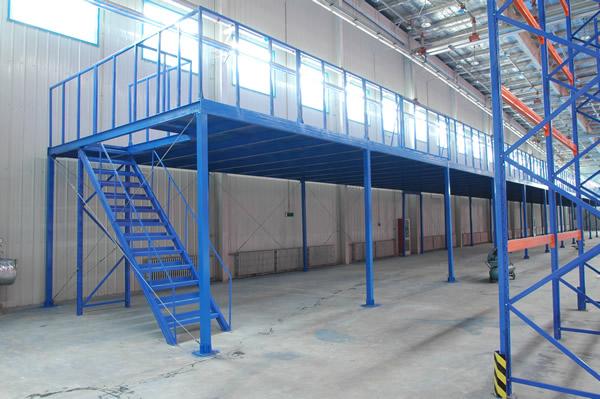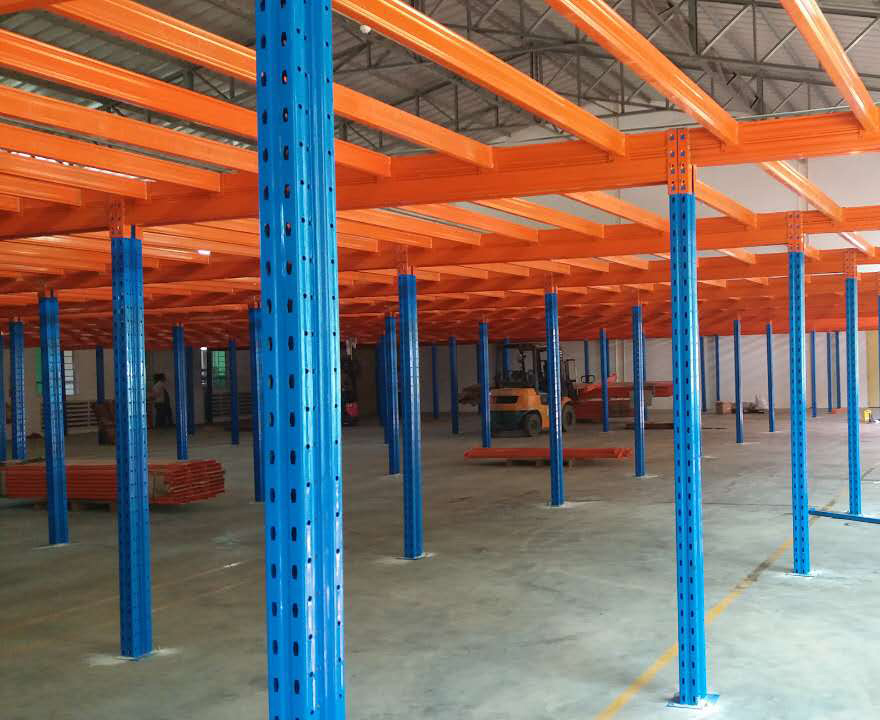In today's competitive industrial landscape, optimizing warehouse storage is crucial for improving operational efficiency, reducing costs, and maximizing productivity. One of the most effective solutions gaining traction is the use of warehouse hanging racks. These versatile storage systems allow businesses to leverage vertical space, organize inventory efficiently, and streamline workflows. This article delves into the benefits of incorporating warehouse hanging racks, strategies to maximize vertical storage space, and a comprehensive guide to warehouse storage solutions. Whether you're managing a small facility or a large distribution center, understanding how to implement these racks can transform your storage capabilities. We'll also explore real-world applications, including insights from the brand Guangshun, known for its innovative storage products. By the end, you'll have a clear roadmap to enhance your warehouse operations, along with answers to common questions in our FAQ section.

Warehouse hanging racks offer a multitude of benefits that can significantly impact your bottom line. First and foremost, they enhance space utilization by allowing items to be stored overhead, freeing up valuable floor space for other activities like assembly lines or movement of goods. This is particularly beneficial in warehouses where square footage is limited. By installing warehouse hanging racks, companies can store more inventory without expanding their physical footprint, leading to cost savings on rent or construction.
Another key advantage is improved organization and accessibility. These racks enable easy categorization of items, such as tools, parts, or seasonal goods, which can be hung in a way that reduces clutter and minimizes the risk of damage. For instance, in a facility using Guangshun's durable hanging systems, workers can quickly locate and retrieve items, boosting productivity and reducing downtime. Additionally, warehouse hanging racks contribute to better inventory management. With clear visibility and systematic arrangement, it becomes easier to conduct stock checks and prevent losses due to misplacement.
Safety is also a critical factor. By storing items off the ground, warehouse hanging racks reduce tripping hazards and create a cleaner, more organized environment. This aligns with occupational health standards, lowering the likelihood of accidents and associated liabilities. Moreover, these racks are designed to handle heavy loads, ensuring stability and durability over time. For example, Guangshun's products often feature reinforced materials that withstand harsh warehouse conditions, providing long-term reliability.
From an economic perspective, investing in warehouse hanging racks can lead to substantial returns. They are relatively low-cost compared to alternative storage expansions and can be customized to fit specific needs. This flexibility allows businesses to adapt to changing inventory demands without major overhauls. In summary, the benefits of warehouse hanging racks include space savings, enhanced organization, improved safety, and cost-effectiveness, making them an indispensable tool in modern warehouse management.
To fully harness the potential of warehouse hanging racks, it's essential to focus on maximizing vertical storage space. Warehouses often have high ceilings that are underutilized, presenting an opportunity to store more items without occupying additional floor area. Here are practical strategies to achieve this:
Assess Your Warehouse Layout: Begin by evaluating the current storage capacity and ceiling height. Identify areas where vertical space is wasted, such as above aisles or workstations. By mapping out these zones, you can plan the installation of warehouse hanging racks in a way that complements existing layouts. For instance, Guangshun offers consulting services to help businesses design optimal rack placements based on their specific dimensions and inventory types.
Choose the Right Rack System: Not all hanging racks are created equal. Select systems that are adjustable and scalable to accommodate varying item sizes and weights. Look for features like modular designs, which allow for easy reconfiguration as storage needs evolve. Guangshun's product line, for example, includes customizable warehouse hanging racks with options for different load capacities and attachment methods, ensuring they fit seamlessly into your vertical storage strategy.
Implement Efficient Loading Techniques: To avoid overloading and ensure safety, distribute weight evenly across the racks. Use labeling and color-coding systems to indicate weight limits and storage categories. This not only prevents accidents but also speeds up retrieval processes. Training staff on proper loading and unloading procedures is crucial; for instance, Guangshun provides guidelines and training materials to help teams maximize the efficiency of their warehouse hanging racks.
Integrate with Other Storage Solutions: Combine warehouse hanging racks with shelving units, mezzanines, or pallet racks to create a holistic storage system. This layered approach allows for even greater space utilization. For example, hanging racks can be used for lighter, frequently accessed items, while bulkier goods are stored on lower levels. This synergy enhances overall workflow and reduces congestion.
Leverage Technology for Monitoring: Incorporate inventory management software that tracks items stored on warehouse hanging racks. Using barcodes or RFID tags, you can maintain real-time visibility of stock levels and locations. This technological integration, supported by brands like Guangshun, ensures that vertical storage remains organized and accessible, minimizing errors and maximizing efficiency.
By implementing these strategies, businesses can transform unused overhead space into productive storage areas. This not only boosts capacity but also improves operational flow, making warehouse hanging racks a cornerstone of effective vertical storage management.
When it comes to warehouse storage, a one-size-fits-all approach rarely works. A well-rounded warehouse storage solutions guide should encompass various systems, including warehouse hanging racks, to address diverse needs. This section provides an overview of key storage solutions and how they integrate with hanging racks for optimal performance.
1. Types of Storage Systems: Warehouses typically use a mix of pallet racks, shelving units, and warehouse hanging racks. Pallet racks are ideal for heavy, bulk items, while shelving suits smaller parts. Warehouse hanging racks, on the other hand, excel in storing irregularly shaped items, tools, or seasonal inventory that doesn't require floor space. For instance, Guangshun offers a range of hanging solutions that can be paired with other systems to create a versatile storage environment.
2. Planning and Implementation: Start by conducting a needs assessment—analyze inventory turnover, item sizes, and workflow patterns. Based on this, design a layout that incorporates warehouse hanging racks in high-traffic areas or above machinery to save space. It's important to consider factors like load capacity, accessibility, and safety regulations. Guangshun's experts often assist in this phase, providing customized plans that align with industry standards.
3. Cost-Benefit Analysis: Evaluate the investment in warehouse hanging racks against potential savings from reduced space requirements and improved efficiency. These racks are generally cost-effective, with quick payback periods due to enhanced productivity. Include maintenance costs in your analysis; for example, Guangshun products are known for their low upkeep, adding to long-term savings.
4. Sustainability and Future-Proofing: Modern storage solutions should be environmentally friendly and adaptable. Warehouse hanging racks made from recyclable materials, like those from Guangshun, support sustainability goals. Additionally, opt for scalable systems that can grow with your business, preventing the need for frequent replacements.
5. Case Studies and Best Practices: Learn from successful implementations. For example, a distribution center that integrated Guangshun's warehouse hanging racks reported a 30% increase in storage capacity and a 20% reduction in retrieval times. Such examples highlight the practical benefits of a comprehensive approach.
By following this warehouse storage solutions guide, businesses can create an efficient, scalable storage infrastructure. Warehouse hanging racks play a pivotal role in this, offering flexibility and efficiency that complement other systems.

Successfully integrating warehouse hanging racks requires careful planning and execution. Start by training employees on the proper use of these systems to ensure safety and efficiency. Conduct regular audits to assess performance and make adjustments as needed. For instance, Guangshun provides ongoing support and maintenance services to help businesses keep their warehouse hanging racks in top condition.
Moreover, consider the ergonomic aspects. Ensure that racks are installed at heights that are accessible without straining workers, possibly using lifts or ladders. This not only improves productivity but also enhances employee satisfaction. By weaving warehouse hanging racks into daily operations, warehouses can achieve a seamless workflow that maximizes both space and time.
Q1: What types of items are best suited for warehouse hanging racks?
A1: Warehouse hanging racks are ideal for storing lightweight to medium-weight items such as tools, equipment, seasonal goods, and long or irregularly shaped objects like pipes or cables. They are not recommended for extremely heavy or bulky items unless specifically designed for high load capacities, as seen in some Guangshun models.
Q2: How do I determine the right load capacity for my hanging racks?
A2: To determine load capacity, assess the weight of the items you plan to store and consult the manufacturer's specifications. For example, Guangshun provides detailed charts for their warehouse hanging racks, indicating maximum weights based on model and installation type. It's also advisable to include a safety margin to prevent overloading.
Q3: Can hanging racks be customized for unique warehouse layouts?
A3: Yes, many warehouse hanging racks, including those from Guangshun, offer customization options. You can adjust heights, widths, and configurations to fit specific spaces. Work with suppliers to design a system that aligns with your warehouse's dimensions and storage needs.
Q4: What maintenance is required for warehouse hanging racks?
A4: Regular maintenance includes inspecting for wear and tear, tightening bolts, and checking for rust or damage. Clean the racks periodically to prevent dust buildup. Guangshun recommends quarterly inspections and provides maintenance kits to ensure longevity and safety.
Q5: Are there any safety risks associated with using hanging racks?
A5: While warehouse hanging racks are generally safe, risks can arise from improper installation, overloading, or lack of maintenance. To mitigate these, follow installation guidelines, train staff on usage, and conduct routine checks. Guangshun's products often include safety features like locking mechanisms and weight indicators to reduce hazards.
In conclusion, warehouse hanging racks are a powerful tool for transforming storage efficiency. By understanding their benefits, maximizing vertical space, and following a structured storage solutions guide, businesses can achieve significant improvements. Brands like Guangshun offer reliable options to support these efforts. If you have more questions, refer to the FAQ section or consult with storage experts to tailor solutions to your needs.
 Wechat
Wechat
 Whatsapp
Whatsapp